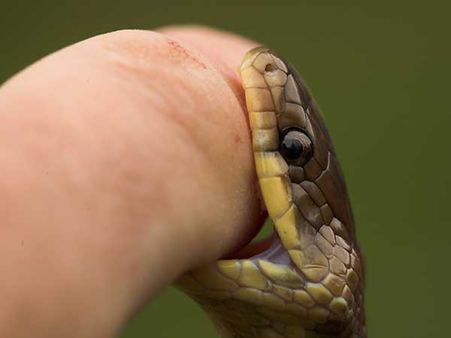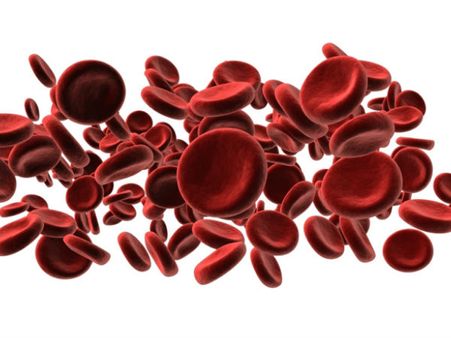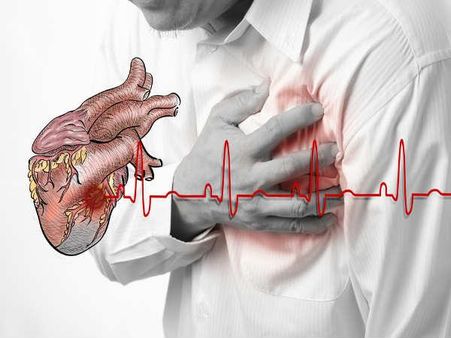Just In
- 6 hrs ago

- 15 hrs ago

- 17 hrs ago

- 18 hrs ago

Don't Miss
- Education
 JEE Main Result 2024 Out, Telangana's 15 Toppers Shine, Check Statewise List of 56 Candidates with Perfect 100
JEE Main Result 2024 Out, Telangana's 15 Toppers Shine, Check Statewise List of 56 Candidates with Perfect 100 - Sports
 Who Won Yesterday's IPL Match 40? DC vs GT, IPL 2024 on April 24: Delhi Capitals Clinch High-Scoring Thriller At Kotla
Who Won Yesterday's IPL Match 40? DC vs GT, IPL 2024 on April 24: Delhi Capitals Clinch High-Scoring Thriller At Kotla - News
 Mangalsutra Row: Did Indira Gandhi Donate Gold During The 1962 War? The Facts Behind Priyanka's Claim
Mangalsutra Row: Did Indira Gandhi Donate Gold During The 1962 War? The Facts Behind Priyanka's Claim - Movies
 Kota Factory 3 OTT Release Date, Platform: When Will Jitendra Kumar's Web Series Premiere On Netflix?
Kota Factory 3 OTT Release Date, Platform: When Will Jitendra Kumar's Web Series Premiere On Netflix? - Travel
 Escape to Kalimpong, Gangtok, and Darjeeling with IRCTC's Tour Package; Check Itinerary
Escape to Kalimpong, Gangtok, and Darjeeling with IRCTC's Tour Package; Check Itinerary - Finance
 DCB Bank Q4 Results: PAT Grew 9% To Rs 156 Cr, NII Jumps 4.5%; Dividend Declared
DCB Bank Q4 Results: PAT Grew 9% To Rs 156 Cr, NII Jumps 4.5%; Dividend Declared - Technology
 OPPO Find X7 Ultra Camera Deep-Dive: Pushing the Boundaries of Photography on a Smartphone
OPPO Find X7 Ultra Camera Deep-Dive: Pushing the Boundaries of Photography on a Smartphone - Automobiles
 Aston Martin Vantage Launched In India At Rs 3.99 Crore
Aston Martin Vantage Launched In India At Rs 3.99 Crore
What To Do If A Snake Bites You?
Most of us are scared of snakes or at least at some point in our life would have come across a situation where the thought of a snakebite might have left us with goosebumps. It is, therefore, extremely important to be aware of the types of snakebites (poisonous, non-poisonous) and what you should be doing so that you can eliminate any life-threatening hazards arising out of a snakebite episode.

Types Of Snakebites
Snakebite is the injury that occurs once a snake bites you. Technically, a snakebite can be categorized as:
• Dry bite
When a venomous snake bites but does not release venom, the bite is referred to as a dry bite. By definition dry bite is understood as "venomous snake biting without envenoming". The frequency of dry bites varies among the species of snakes. They are ideally identified with the appearance of tooth marks and fang, but without the presence of injected venom. However, it is good to know that even if a harmless snake bites you, there could still be an infection due to the snakebite becoming infected or an allergic reaction.
• Venomous bite
When a snake bites and releases venom, the bite is understood as a venomous bite. It begins with a localized pain and then makes the area swell. The symptoms of a venomous bite can worsen if the bite is left untreated. Severe symptoms include nausea, convulsions and paralysis. Snakebite symptoms may also be specific to the species of the particular snake that has made the bite.
Most of us are scared of snakes or at least at some point in our life would have come across a situation where the thought of a snakebite might have left us with goosebumps. It is, therefore, extremely important to be aware of the types of snakebites (poisonous, non-poisonous) and what you should be doing so that you can eliminate any life-threatening hazards arising out of a snakebite episode.
Types Of Snakebites
Snakebite is the injury that occurs once a snake bites you. Technically, a snakebite can be categorized as:

Symptoms Of A Venomous Bite
Most of the time, it is quite difficult to know if the snakebite is a dry bite or a venomous bite. However, it is always good to treat a snakebite as a venomous bite and seek immediate first aid for it.
The usual symptoms of a venomous bite are:
•
Redness
and
swelling
around
the
wound
•
Blurred
vision
•
Two
puncture
wounds
•
Pain
at
the
site
of
the
snakebite
•
Breathing
difficulty
•
Salivating
•
Sweating
•
Numbness
in
the
limbs
and
face
•
Nausea
and
vomiting

First Aid For Snakebite
The victim should be rushed to a hospital. In the meantime, follow the first aid tips mentioned below.
•
Restrict
the
movement
of
the
victim.
Ensure
that
he
or
she
is
calm
and
does
not
panic
much.
When
the
victim
panics,
the
heart
rate
increases
and
makes
the
venom
circulate
more
quickly
in
the
body.
•
The
bitten
area
is
likely
to
swell,
so
remove
any
items
that
might
get
tightened
such
as
rings,
bracelets,
etc.
•
Do
not
cover
the
bitten
area
or
the
puncture
marks.
Just
clean
the
region
with
an
antiseptic.
•
You
would
need
to
stop
the
lymphatic
spreading
of
the
venom.
Immobilize
the
region
by
bandaging
firmly.
Use
a
splint
to
immobilize
the
arm
or
leg
area
that
has
been
bitten.
Try
to
keep
the
bitten
area
(such
as
if
on
the
hand)
at
the
level
of
the
heart.
This
prevents
the
venom
from
flowing
to
other
major
areas
of
the
body.
•
Use
a
compression
bandage
to
cover
the
entire
region
along
with
the
splint.
The
wrapping
should
be
firm
and
tight.
If
the
bitten
region
is
on
the
hand
-
begin
wrapping
from
the
digits
and
go
till
the
armpit.
If
the
bitten
region
is
the
leg,
then
go
on
wrapping
till
the
groin
area.
•
Metabolism
of
the
victim
should
be
kept
low.
Hence,
do
not
allow
the
victim
to
eat
or
drink
anything.
•
If
possible,
within
the
first
5
minutes
of
the
bite,
use
a
suction
device
to
aspirate
the
venom
out
of
the
puncture
marks.

What Happens To Your Body After A Snakebite?
If the venom injected after a snakebite is a hemotoxic venom, then the victim is likely to experience a drastic decrease in the blood pressure along with blood clotting. On the other hand, cytotoxic venom is responsible for destroying the human tissue. So, when such tissue dies, it needs to be amputated. Neurotoxic venom is such that it spoils the functionality of the brain and the nervous system.

What Are The Complications Of A Snakebite?
One of the most commonly heard complications when a pit viper snake bites is that of delayed coagulopathy. The wound can develop an infection and there could be skin loss around the affected region. In some rare cases, snakebites can lead to health complications such as hematologic issues, cardiovascular ailments and pulmonary collapse.

Treatment Options
The venom of the snake is a salivary secretion that is used to kill and digest prey. Technically, there are two basic categories of the snake venom. The first kind is the one that affects the nerves (usually the venom of common krait and cobra). The second kind is the one that enters the blood (that of vipers). If someone around you has been bitten by a snake, do not panic, reach out to the nearest hospital to get an anti-venom serum.
-
 pulseViral: Drunk Man Teasing And Playing With Snake Will Send Chills Down Your Spine
pulseViral: Drunk Man Teasing And Playing With Snake Will Send Chills Down Your Spine -
 womenBrides Receive Poisonous Snakes As Dowry In Kawardha, Chhattisgarh
womenBrides Receive Poisonous Snakes As Dowry In Kawardha, Chhattisgarh -
 festivalsNag Panchami 2021: Interesting Legends Associated with Nag Panchami
festivalsNag Panchami 2021: Interesting Legends Associated with Nag Panchami -
 festivalsSignificance Of Celebrating Naga Panchami Festival
festivalsSignificance Of Celebrating Naga Panchami Festival -
 festivalsNag Panchami 2019: The Auspicious Festival Of Snakes
festivalsNag Panchami 2019: The Auspicious Festival Of Snakes -
 wellnessFolk Remedies For Snake Bite
wellnessFolk Remedies For Snake Bite -
 faith mysticismWhy Does Lord Vishnu Sleep On A Serpent Bed?
faith mysticismWhy Does Lord Vishnu Sleep On A Serpent Bed? -
 faith mysticismSheshnag (5 Headed Snake): Myth Or Reality
faith mysticismSheshnag (5 Headed Snake): Myth Or Reality -
 pulse5 Interpretations Of A Snake Dream
pulse5 Interpretations Of A Snake Dream -
 lifeTop 5 World's Most Poisonous Snakes
lifeTop 5 World's Most Poisonous Snakes -
 trends n styleSlitter In Classic Snake Shoes!
trends n styleSlitter In Classic Snake Shoes! -
 pulseWHO Website To Prevent Snakebite Deaths
pulseWHO Website To Prevent Snakebite Deaths


 Click it and Unblock the Notifications
Click it and Unblock the Notifications



